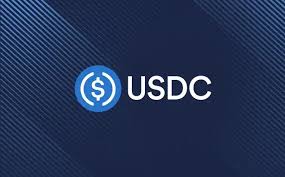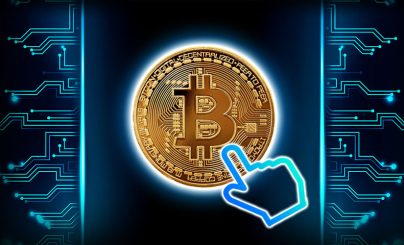USD Coin (USDC) is a stablecoin pegged to the US dollar at a 1:1 ratio that was launched on September 26, 2018. It was created by Circle and Coinbase as part of the Centre consortium to offer a transparent and regulated alternative to other stablecoins, including Tether (USDT).
USDC is the second most popular stablecoin in the world after USDT, with a market capitalization of more than $50 billion as of 2025. It functions as a second-tier token on several blockchains, including Ethereum (ERC-20), Stellar, Solana, Algorand, Tron, Avalanche, and Polygon, enabling fast and cost-effective transactions.
The USDC aims to combine the stability of fiat currencies with the advantages of cryptocurrencies, such as speed of transfers, transparency, and global accessibility. Thanks to a clear regulatory approach and regular audits, the USDC is positioned as a "trusted digital dollar" for trade, payments, and decentralized finance (DeFi).
History of creation
The USDC was launched by Circle, a financial technology company founded by Jeremy Aller and Sean Neville in 2013, and Coinbase, one of the largest crypto exchanges in the world founded by Brian Armstrong and Fred Ersam in 2012.
The idea came about amidst the growing popularity of Tether and controversy surrounding its reserves. In 2018, Circle and Coinbase joined forces in the Centre consortium, which developed a standard for USDC to ensure transparency and compliance with US financial regulations.
The first USDC token appeared on Ethereum as ERC-20, and the project later expanded to other blockchains to reduce transaction costs and increase accessibility. Circle has received significant investments (e.g., $440 million in 2021 from Fidelity and FTX), which has helped to scale USDC.
How USDC works
USDC is a fiat-backed stablecoin where each token is backed by 1 US dollar or its equivalent in reserves.
Circle keeps these reserves in regulated financial institutions in the United States, such as banks and thrifts. Unlike Tether, USDC positions itself as a fully transparent asset:
- Reserves consist of cash (about 60%) and short-term US Treasury bonds (about 40%).
- Monthly audits are conducted by Grant Thornton LLP, confirming a 1:1 match between the circulating offer and assets.
Users can exchange USDC for USD through the Circle platform or Centre consortium partners with no additional fees (except for network fees). New tokens are issued when Circle receives deposits in USD, and when redeemed, tokens are burned to maintain stability.
Features and benefits
- Transparency: Regular audits and compliance with US regulatory standards (Circle is licensed by the NYDFS) make USDC one of the most reliable stablecoins.
- Stability: The peg to the US dollar provides protection against crypto market volatility.
- Wide support: USDC is available on many blockchains, which reduces costs and increases transaction speed (for example, on Solana - up to 50,000 transactions per second).
- Integration into DeFi: USDC is a key asset in decentralized finance, used in liquidity pools, lending, and staking.
- Partnerships: Circle has partnered with Visa, Mastercard, and PayPal to expand the use of USDC in real-world payments.
Development history and key events
2018
Launch of USDC on Ethereum with an initial circulation of several million tokens.
2019
Expansion to Stellar and Algorand, capitalization reaches $1 billion. Visa announced the integration of USDC for transactions.
2020
USDC has become the second largest stablecoin, surpassing Paxos and Dai, with a capitalization of $2.8 billion.
2021
Capitalization increased to $25 billion amid the DeFi boom. Circle announced plans to go public through a SPAC ($4.5 billion valuation), but the deal fell through in 2022.
2022
USDC withstood the collapse of TerraUSD (UST), maintaining stability when other stablecoins were losing their pegs. The capitalization exceeded $55 billion.
2023
The crisis of Silicon Valley Bank (SVB), where Circle held $3.3 billion in reserves, caused USDC to temporarily drop to $0.87. Circle quickly transferred the funds and the price recovered.
2024
USDC expanded to Avalanche and Polygon, and capitalization stabilized at $50-55 billion. Circle received a banking license in the United States.
Controversy and criticism
- Centralization: USDC is controlled by Circle, which allows the company to freeze tokens (e.g., $100K in 2020 at the request of law enforcement), drawing criticism from decentralization advocates.
- The banking crisis of 2023: The events with SVB undermined confidence in the reserves, although Circle quickly resolved the situation.
- Competition with USDT: USDC is inferior to Tether in terms of trading volume and circulation, which is explained by a less aggressive marketing strategy and a focus on regulation.
As of March 2025, the USDC market capitalization is approximately $51.2 billion with a circulating supply of 51,245,678,901 tokens (data is based on 2024 trends).
The daily trading volume fluctuates between $5-7 billion, which is significantly lower than USDT ($55-60 billion), but sufficient to maintain high liquidity. The USDC price is stable at $1, with rare deviations to $0.99-$1.01 during market turmoil.
Circle is actively promoting USDC in payment systems: in 2024, Visa expanded USDC support for corporate clients, and PayPal added the token to its platform in the United States. The plans include integration with new blockchains and expansion to Asia and Europe.
USD Coin (USDC) is a stablecoin that combines the stability of the US dollar with transparency and technological flexibility. Its strengths - regulatory compliance, regular audits, and broad support in DeFi and traditional finance - make it a reliable choice for investors and businesses.
While USDC is inferior to USDT in terms of scale, it gains in trust and reputation. In 2025, USDC continues to strengthen its position as the "digital dollar" for global transactions, competing with Tether and preparing for new challenges in the regulatory and technological landscape.


